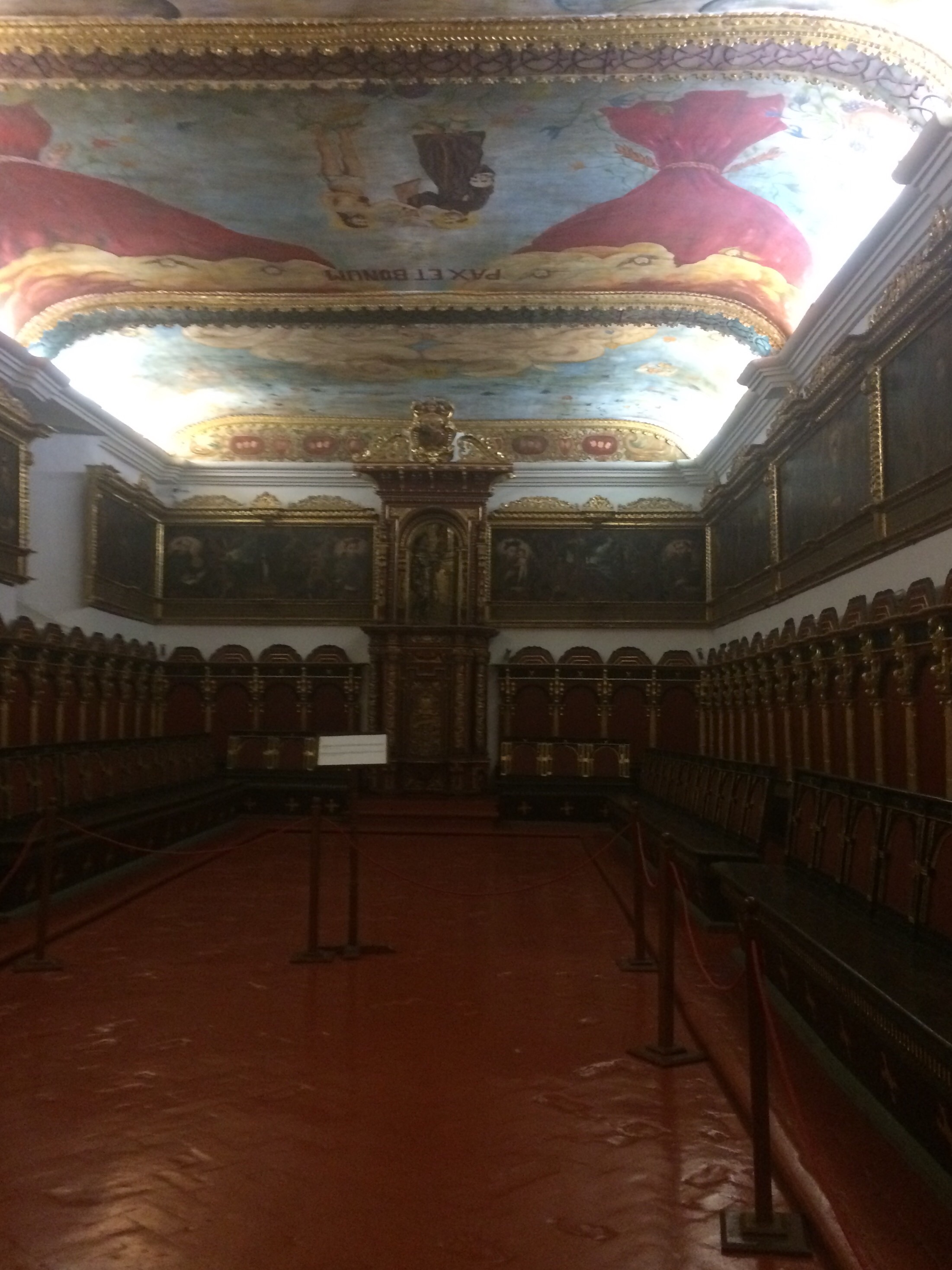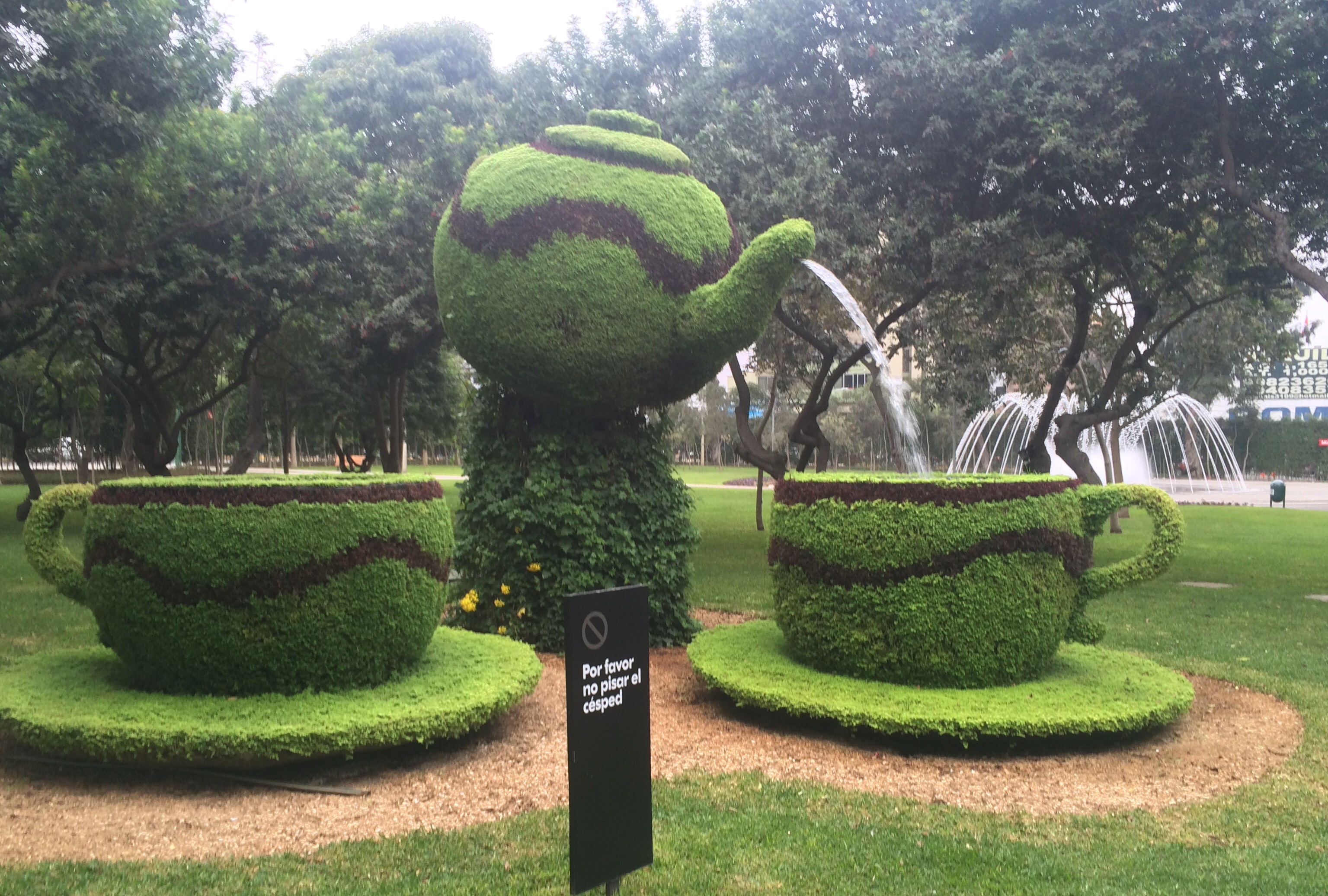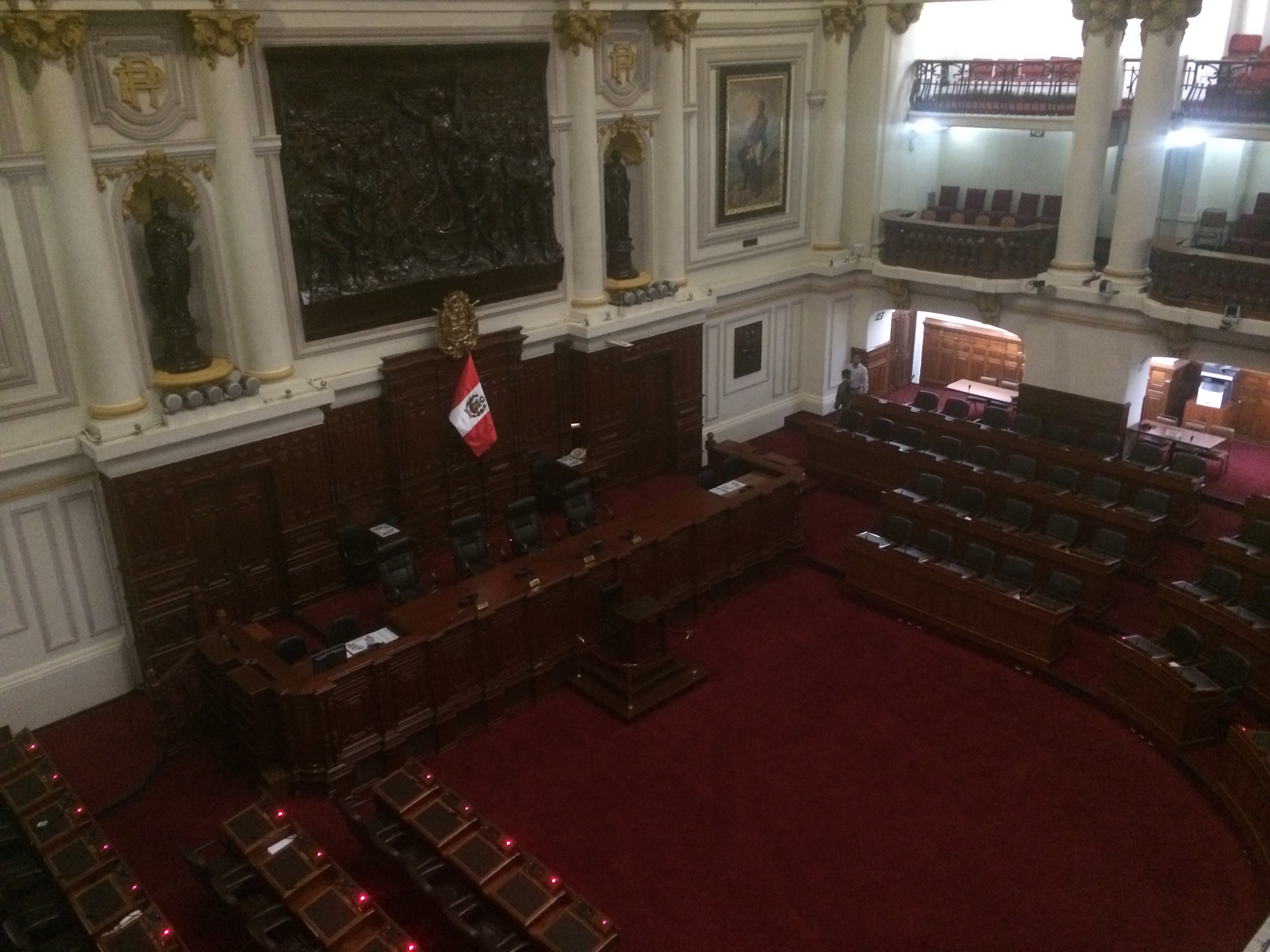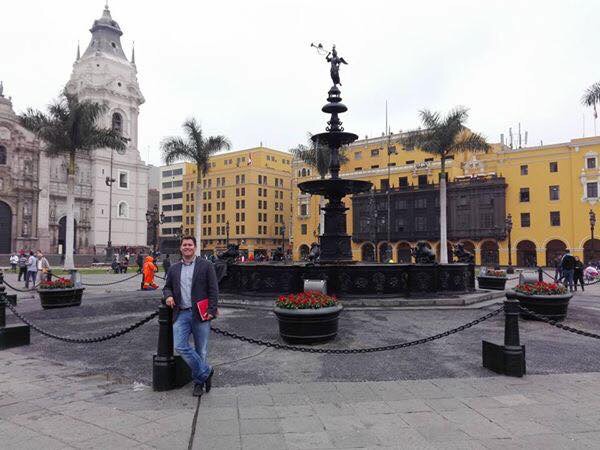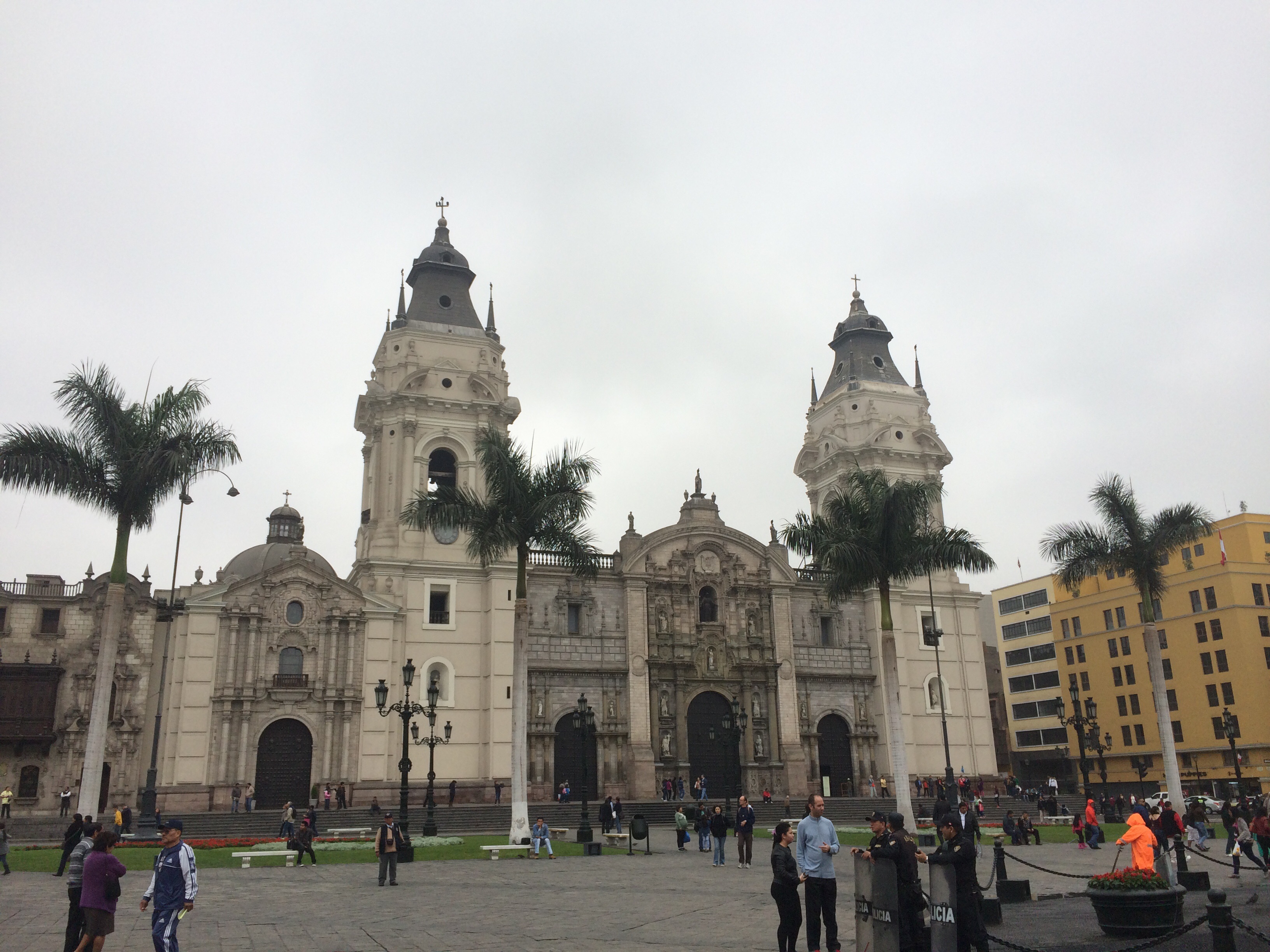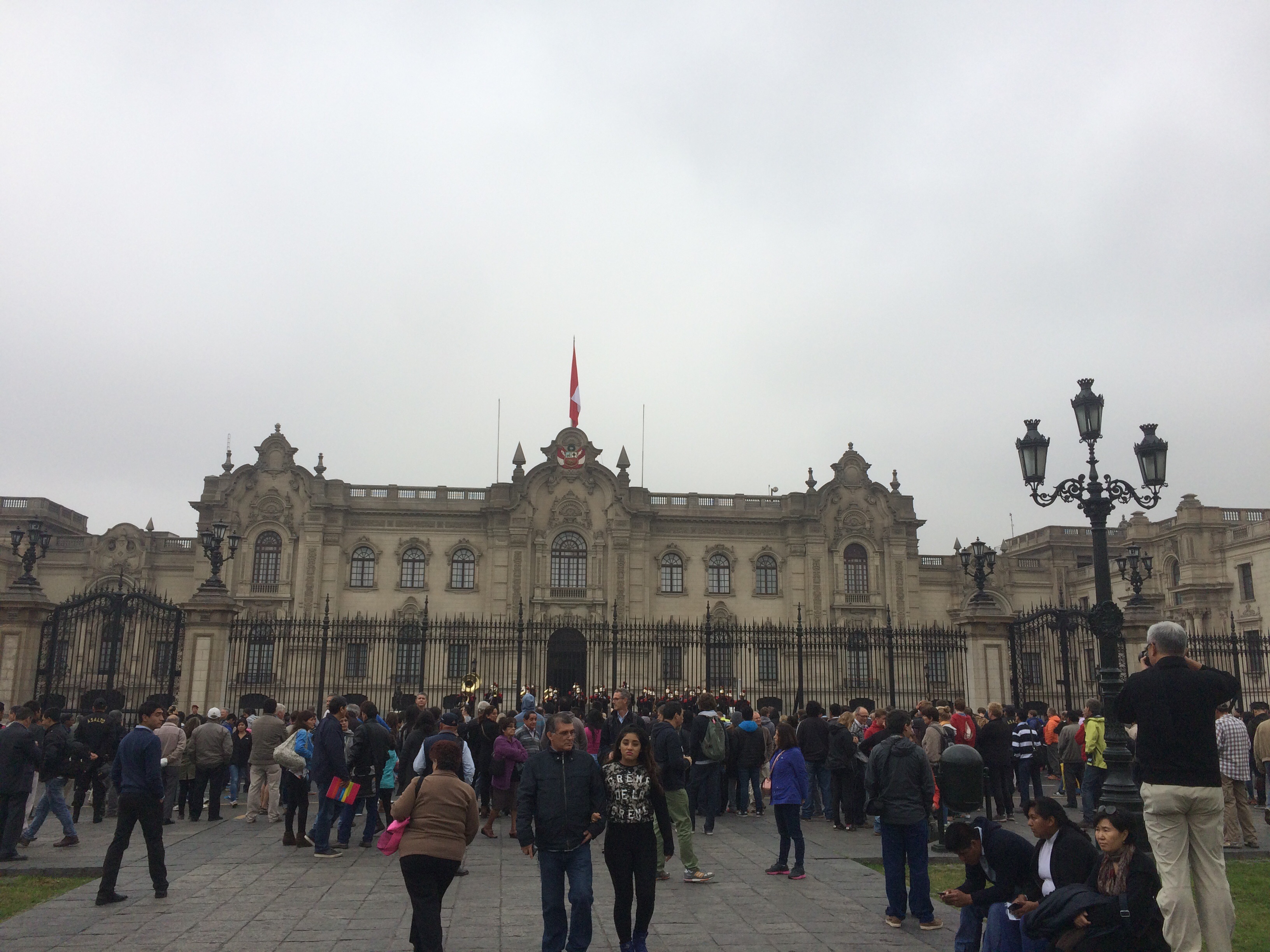2015.08.09.
Trujillo Chan Chan
A Chimú királyság Kr.u. 9-15 század virágzó kultúrája volt,melyet a mitológia szerint Takaynamo istenség alapította. Fővárosa az agyagból és vályogból épült Chan Chan (Nap Nap) városa volt, amely ma már az UNESCO világörökség része.
A város a Pre-columbianus Peru egyik legnagyobb városa volt, 200-250.000 lakossal. 9 palotából és rengeteg vallási, lakó és adminisztratív épületből all. Az 1470-es években az inkák elfoglalták, de kultúrájukat és épületeiket nem bántották, szemben a 70 évvel később érkező spanyol hódítókkal szemben.
A chimú gazdaság alapvetően a mezőgazdaságra és a halászatra alapult. Ehhez megfelelő öntözési technika és csatornázási rendszer társult. A halászathoz pedig fából készült "halász flotta" (csónakokból).
Vallásukban központi szerepet játszott a Hold, erősebbnek hittek a Napnál. Chimú nyelven a templomokat sian-nak, a Hold házának hívták.
Az egyetlen látogatható palota, amelyet reszben újjá is építettek a "Tschudi", melyet egy a feltárási munkákban oroszlán szerepet játszó svájci archeológus professzorról neveztek el. A palotát körülvevő falak 10-12 méter magasak és 4-5 méter vastagok voltak. Központi szerepe volt a Fő Ceremónia térnek, melynek falai a tenger hullámait és tengeri állatokat szimbolizálja. Több nagy díszes fogadó terem, tároló helység, több kisebb és egy nagy víztározó, valamint a palotát építtető uralkodó központi síremléke is megtalálható az épület együttesben. Víztározó 148x48 méteres és vallási ceremóniákra is használtak, áldozatokat mutattak be a teli hold visszatükröződő fényénél.
Ebéd után meglátogattunk egy igazi "Peru alapításában" és a szabadságharcban is szerepet játszó, a mai napig Trujilloban élő és köztiszteletben álló családot. Körbevezettek a közel 150 éves haciendaban. Lenyűgöző volt latni a családfájukat, az andalúz stílusú csempéket (azulejo) és képeket, a híres ősök régi portréit és fényképeit a falon. (Több felmenő a régió kormányzója is volt.) Az egész olyan élmény volt,mintha egy spanyol nemesi család andalúziai birtokán lettünk volna. Este a Cesar Vallejo Egyetem rektorával vacsoraztunk.
Dél-amerikai kutató útról szóló kétnyelvű blog / Bilingual blog about a South American study tour
Alex is opening to the South
09.08.2015. Trujillo Chan Chan
09.08.2015.
Trujillo Chan Chan
The Kingdom of Chimú was a flourishing culture in the 9-15th century founded by the goddess Takaynamo due to the mythology. Its capital was Chan Chan (Sun Sun) built of adobe and earth, now part of the UNESCO world heritage. The city was on of the biggest in the Pre-Columbian Peru with its 200-250.000 inhabitants. The town had 9 palaces and uncountable religious, administrative and residential buildings, and water reservoirs. In the years of 1470 it was conquered by the Inca empire but they did not hurt its buildings and culture. 70 years later however the Spanish conquistadors saw no reason to let the Chimús continue its "pagan rituals". They were not destroying the place the manner they did with Cusco, building churches and palaces over the ruins, however the lack of maintenance for the adobe buildings was enough to be destroyed by nature during the hundreds of years. That's why in the 19th century several archeologists from all over the world came to study and preserve what remained.
That is why the only now visitable partially rebuilt palace is the "Tschudi", named after a Swiss archeologist from the 19th century. There palace was protected by 10-12 m high and 4-5 m wide walls. The Central Ceremonial Hall played a crucial role in the palace, it was decorated with symbols of the waves and animals of the see. It has several huge reception halls, uncountable small storage places (for food, weapon etc.), a lot of small and one huge water reservoir, which had probably the size of 148x48 m. It was used for ceremonial proposes and for sacrifices at the reflection the Full Moon in the reservoir, which was the admired centre of the Chimú beliefs.
The economy of the Chimú was based basically on the agriculture and fishing. They had developed a complex irrigation and water management techniques. For the fishing they had a fleet of small wooden boats. In the religion the Moon (and the Full Moon) played a central role, it was more appreciated than the Sun. In Chimú language the temples were called "sian", the house of the Moon.
After lunch we visited an "old" Peruvian family, which participated in the regional political and community life and in the fights for independence. Several members of the family in the 19th century and in the first half of the 20th century was regional governor. They showed me round in a 150 year old hacienda they are still living. It was just like a house of a Spanish noble family in Andalusia, full of portraits and old pictures of the ancestors, Spanish-Andalus style wall-ceramics (azulejo) and paintings. After we had dinner with the rector of the University of Cesar Vallejo.
Lima - iglesia San Francisco ima szoba / praying room
Lima - Parque de Circuito Magico de Agua
Lima - Congresso
Lima - plaza Mayor
Lima - Cathedral
Lima - Elnöki Palota / Government Palace
2015.08.06-08. Lima
2015.08.06-08.
Lima
Rendben kiértem a Cusco-i reptérre, ahol is a check-in után közvetlenül, két rendőr állt a hátam mögött és közölték, hogy legyek szíves velük fáradni a csomagjaimmal együtt... Természetesen nem álltam ellen. :-) Felkísértek egy kihallgató szobába, ahol elmondták, hogy "véletlenszerű" ellenőrzést végeznek "rajtam". Szerencsére ez csak a hátizsákok alapos átvizsgálását jelentette... :-) Végül (nem emiatt) két órás késéssel érkeztem meg Limába Cusco-bol.
Este egy Barcelonában megismert egyetemi tanár kolléga meghívott a lakása tetőteraszán rendezett baráti összejövetelre. Ezen az estén derült ki számomra, hogy nem csak simán egyetemi tanár, hanem a perui kongresszus elnökének kabinetfőnöke. Úgyhogy másnap reggel magán "tárlatvezetést" kaptam a Peru Kongresszus múzeumának (az Inkvizíció és a Kongresszus Múzeuma) igazgatójától, majd körbevezettek a kongresszus épületében és a közös elnöki stábbal elfogyasztott ebédig az egyik kolléga elvitt a Kongresszus épülete mellett levő főtérre, ahol az elnöki palotát az őrségváltással (Brahms: Magyar táncok volt as elsö szám - állítólag én tiszteletemre :-)) és a katedrálist is megnéztük. Ebéd után egy újabb megbeszélés volt egy másik egyetemi tanár kollégával.
A kongresszusi múzeumban érdekes, nagy kaliberű és (Peruban) híres emberek, hősök történetét ismerhettem meg. Az argetin tábornok José de San Martin szabadította fel Perut a spanyol uralom alól kemény csaták árán, kiáltotta ki függetlenségét és hívta össze az első kongresszust. Peru a függetlenség kikiáltása óta minden szomszédjával területi viszálya került a történelme során, és gyakorlatilag minden szomszédja (tárgyalásos úton vagy erőszakkal) hozzá is jutott kisebb vagy nagyobb területeihez.
Szombaton a San Francisco katedrálist néztem meg, illetve a templom katakombáit. Hátborzongató élmény volt ez utóbbi. Sétáltam Lima belvárosában, és a Circuito Magico del Agua parkban. Este pedig indul a buszom Trujilloba.
06-08.08.2015. Lima
06-08.08.2015.
Lima
I arrived to Cusco Airport without any problem, but immediately after the check-in the airport police was behind me and asked me to follow them with all my luggages. Of course I did not resist. :-) They escorted me to a separate room of interrogation, where they said that I was randomly choose for inspection. I had to sign a declaration, and then they searched all of my staff. Finally (not because of this) the plane had a 2 hour delay.
At night a university professor colleague, whom I know from Barcelona, invited me to a "garden party" at the terrace of his flat with his friends. At this party I had to realised that he was not just a professor, but he was the chief of staff of the President of the Congress of Peru. I was invited to visit the Congress, the Museum of the Congress and the Inquisition by the director personally and for a lunch with staff of the President. Before the lunch I was escorted to the Plaza Mayor to visit the cathedral and the change of guard at the Government's Palace, where the first song was "Hungarian dances" by Brahms. After lunch I had a meeting with an other university professor.
In the Museum of the Inquisition and Congress I could learn a lot about the history of Peru and some of its leading historical personalities. Its independence was fought and declared by the Argentinian general, José de San Martin, who convened the first session of the Peruvian congress. Peru had territorial conflict with all of its neighbours and lost territory against all of them after gaining its independence (by war or at the negotiation table).
At Saturday I visited the San Francisco church and its catacombs, which was very creepy. I walked in the center of Lima and in the Part "Circuito Magico del Agua". And now I leaving Lima and go by bus to Trujillo.
